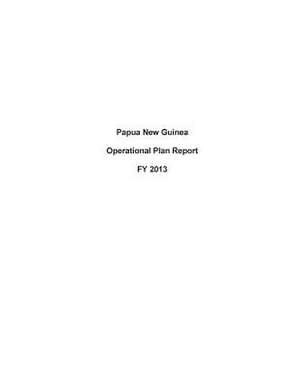Papua New Guinea Operational Plan Report Fy 2013
Autor United States Department of Stateen Limba Engleză Paperback
Preț: 125.11 lei
Nou
Puncte Express: 188
Preț estimativ în valută:
23.94€ • 24.93$ • 20.24£
23.94€ • 24.93$ • 20.24£
Carte disponibilă
Livrare economică 17 februarie-03 martie
Preluare comenzi: 021 569.72.76
Specificații
ISBN-13: 9781503194212
ISBN-10: 1503194213
Pagini: 54
Dimensiuni: 216 x 279 x 3 mm
Greutate: 0.15 kg
Editura: CREATESPACE
ISBN-10: 1503194213
Pagini: 54
Dimensiuni: 216 x 279 x 3 mm
Greutate: 0.15 kg
Editura: CREATESPACE
